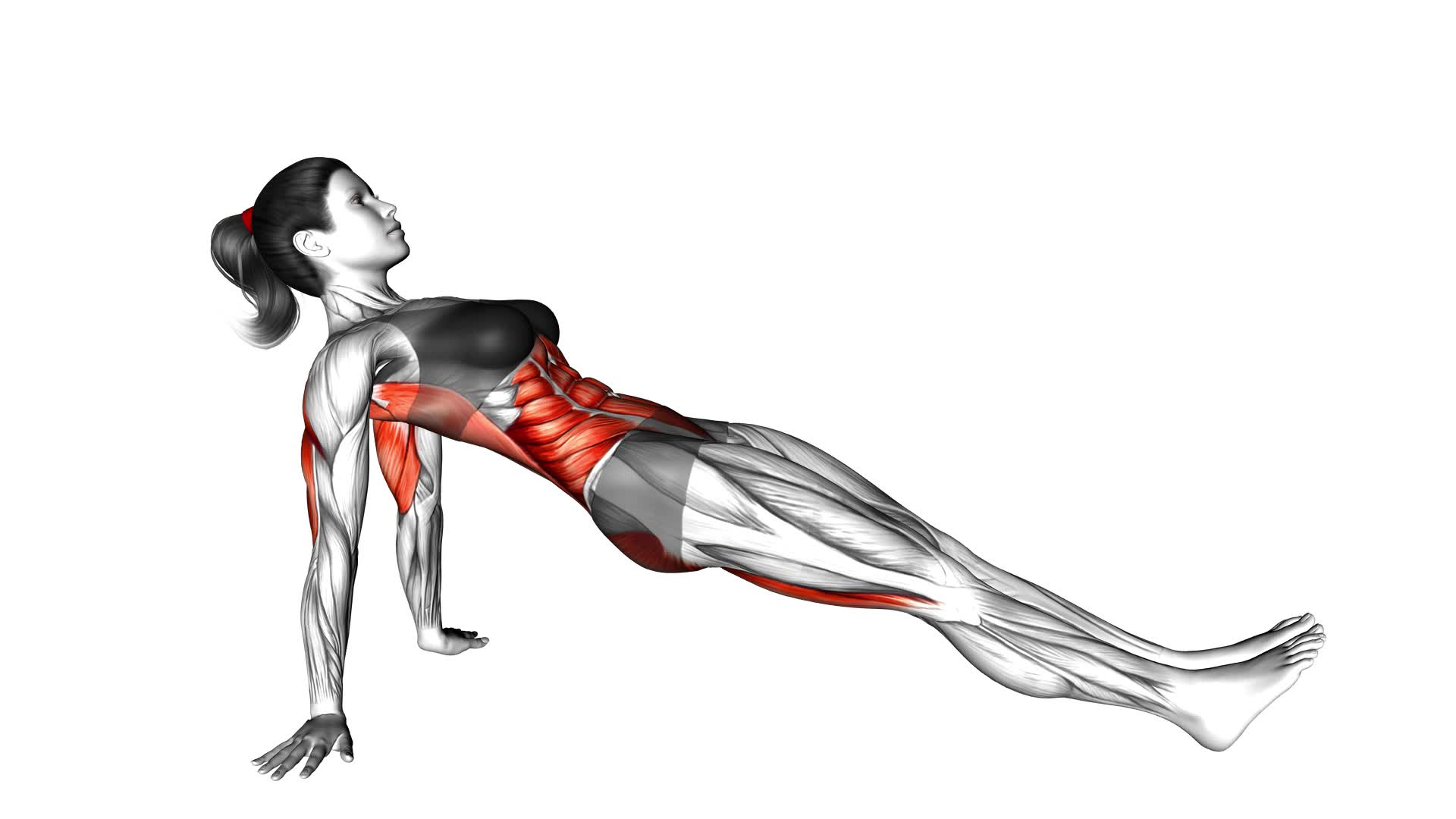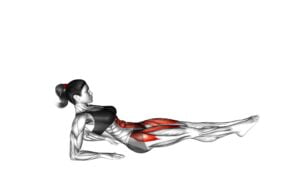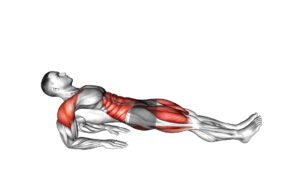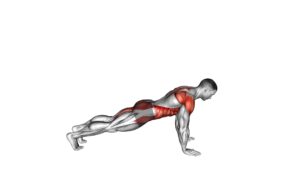Reverse Plank (female) – Video Exercise Guide & Tips

Looking to strengthen your core and tone your body? The reverse plank is a fantastic exercise for females, and this video exercise guide and tips will show you how to do it right.
Watch This Exercise Video
In just a few minutes a day, you can improve your posture, increase flexibility, and build overall strength. Don't worry about making mistakes – we'll help you avoid them.
Get ready to take your fitness routine to the next level with modifications and variations that will challenge you. Let's get started!
Key Takeaways
- Reverse plank exercise improves core strength and targets the glutes, hamstrings, and lower back.
- It increases flexibility in the shoulders, hips, and spine and enhances balance and coordination.
- The exercise boosts overall body awareness, confidence, and posture.
- Modifications and progressions can be done to increase or decrease the intensity of the reverse plank exercise.
Benefits of Reverse Plank for Females
There are five key benefits that you can experience as a female when practicing the reverse plank exercise.
One of the most important benefits is the improvement in core strength. As a woman, having a strong core is crucial for maintaining good posture, preventing lower back pain, and supporting your everyday movements.
When comparing the reverse plank to the traditional plank, you might be wondering which is better for females. While both exercises target the core muscles, the reverse plank specifically targets the posterior chain, including the glutes, hamstrings, and lower back. This makes it a great exercise for women who want to strengthen their entire core and improve their overall stability.
In addition to core strength, the reverse plank also helps to improve flexibility in the shoulders, hips, and spine. It can also enhance your balance and coordination, as it requires you to engage multiple muscle groups simultaneously. Lastly, practicing the reverse plank regularly can help to increase your overall body awareness and boost your confidence.
Now that you understand the benefits of the reverse plank, let's move on to the next section and learn how to properly perform this exercise.
How to Properly Perform the Reverse Plank
To properly perform the reverse plank, follow these steps and engage your core muscles for maximum benefits.
Start by sitting on the floor with your legs extended in front of you, feet hip-width apart. Place your hands on the floor behind you, fingers pointing towards your feet. Press through your hands and lift your hips off the ground, coming into a reverse tabletop position.
Keep your arms straight, shoulders stacked over your wrists, and fingers spread wide for proper alignment. Ensure that your body forms a straight line from your head to your heels. Engage your core muscles by drawing your belly button towards your spine and squeezing your glutes.
Avoid overarching your lower back or sinking into your shoulders. Instead, think of lifting your chest towards the ceiling and lengthening your spine. Common form mistakes to watch out for include letting your hips sag or pike up, which can put unnecessary strain on your lower back.
Remember to keep your neck relaxed and maintain a steady breath throughout the exercise. By practicing the reverse plank with proper alignment, you can strengthen your core, improve posture, and increase stability. Stay consistent and challenge yourself to hold the position for longer durations as your strength improves. Keep up the great work!
Common Mistakes to Avoid During the Reverse Plank
Make sure to steer clear of these common mistakes when performing the reverse plank. Proper form is essential to maximize the benefits of this exercise and prevent injuries.
One common mistake is allowing your hips to sag towards the ground. To avoid this, engage your core and squeeze your glutes to maintain a straight line from your head to your heels.
Another mistake is placing your hands too far away from your body, which can strain your shoulders and wrists. Instead, position your hands directly under your shoulders for optimal support and stability.
Additionally, avoid lifting your chin towards the ceiling, as this can strain your neck. Instead, keep your gaze towards your feet to maintain a neutral spine position.
Lastly, rushing through the exercise is a mistake to avoid. Take your time to perform each repetition with control and focus on maintaining proper form throughout.
Modifications and Variations to Try
For added challenge and variety, you can try out different modifications and variations of the reverse plank exercise. Here are some options to keep your workouts interesting and target different muscle groups:
- Single Leg Reverse Plank: Lift one leg off the ground while maintaining the plank position. This variation increases the engagement of your core and glutes.
- Reverse Plank with Arm Reach: Extend one arm out in front of you while holding the reverse plank position. This modification adds an extra challenge to your shoulder stability and upper body strength.
- Reverse Plank Knee Tuck: From the reverse plank position, bring your knees towards your chest and then extend them back out. This movement targets your abs and hip flexors, giving you a more intense core workout.
- Reverse Plank with Hip Dip: While in the plank position, lower your hips to one side and then alternate to the other side. This variation targets your obliques and helps improve overall core stability.
By incorporating these reverse plank modifications and variations into your routine, you can challenge your muscles in new ways and prevent boredom.
Now, let's move on to the next section to discover tips for progressing and increasing difficulty in the reverse plank exercise.
Tips for Progressing and Increasing Difficulty in Reverse Plank
To progress and increase the difficulty in the reverse plank exercise, you can implement the following tips.
Firstly, focus on increasing your hold time. Start with holding the reverse plank for 30 seconds and gradually work your way up to a minute or more. This will challenge your core and upper body strength.
Another way to increase the difficulty is by adding leg lifts. While maintaining the reverse plank position, lift one leg off the ground and hold for a few seconds before lowering it back down. Alternate between legs and aim for 8-10 lifts per leg. This will engage your glutes and hamstrings, making the exercise more challenging.
Additionally, you can try adding a stability ball to the exercise. Place your feet on the ball while in the reverse plank position. This will require more stability and core strength to maintain the position.
Lastly, if you're looking for an even greater challenge, you can try doing the reverse plank on an unstable surface, such as a BOSU ball or a foam pad. This will further engage your stabilizer muscles and intensify the exercise.
Remember to always maintain proper form and listen to your body. Push yourself, but don't overdo it. With these progressing tips, you'll continue to challenge yourself and see improvements in your reverse plank exercise. Keep up the great work!
Frequently Asked Questions
Is the Reverse Plank Suitable for Beginners or Is It More Advanced?
The reverse plank can be suitable for beginners, but it's also considered more advanced. However, there are modifications that can make it more accessible for beginners.
It offers many benefits for beginners, such as strengthening the core, improving posture, and increasing flexibility. By practicing regularly and gradually increasing the difficulty, beginners can progress and eventually perform the reverse plank with ease.
Stay consistent and keep pushing yourself to achieve your fitness goals!
Can the Reverse Plank Help Improve Posture?
The reverse plank can definitely help improve your posture. By engaging your core muscles and opening up your chest and shoulders, this exercise promotes better alignment and stability in your spine.
It also strengthens your back muscles, which play a key role in maintaining good posture. Additionally, there are various variations of the reverse plank that you can try to challenge yourself and target different muscle groups.
Are There Any Specific Muscle Groups Targeted by the Reverse Plank?
When doing the reverse plank, you're targeting specific muscle groups in your body. This exercise engages your core, glutes, hamstrings, and shoulders. By strengthening and activating these muscles, you can improve your overall stability and posture.
The reverse plank also offers a range of benefits, including increased upper body strength, improved balance, and enhanced flexibility. So get ready to work those muscles and reap the rewards of the reverse plank!
Can the Reverse Plank Help With Core Strength and Stability?
The reverse plank can definitely help improve your core strength and stability. It engages multiple muscle groups, including your abs, glutes, and shoulders.
By performing the reverse plank, you can strengthen your core muscles, which can enhance your overall athletic performance.
Additionally, there are various modifications you can try to make the exercise more challenging or accessible based on your fitness level.
Is It Necessary to Warm up Before Attempting the Reverse Plank Exercise?
Before attempting the reverse plank exercise, it's important to warm up your body. Incorporating warm-up exercises into your routine has many benefits, including increasing blood flow, improving flexibility, and reducing the risk of injury.
To properly warm up, you can start with some light cardio exercises like jogging or jumping jacks. Then, focus on dynamic stretches that target the muscles you'll be using during the reverse plank.
Taking the time to warm up will help you perform the exercise safely and effectively.
Conclusion
The reverse plank is a powerful exercise that offers numerous benefits for females. By engaging the core, glutes, and upper body, it helps improve posture, strengthen the back, and increase overall stability.
To perform it correctly, remember to keep your body in a straight line and avoid common mistakes like sagging hips or lifting the chin. As you progress, try modifications like leg lifts or adding a resistance band for an extra challenge.
Keep pushing yourself and enjoy the rewards of a stronger, more toned physique.

Author
Years ago, the spark of my life’s passion ignited in my mind the moment I stepped into the local gym for the first time. The inaugural bead of perspiration, the initial endeavor, the very first surge of endorphins, and a sense of pride that washed over me post-workout marked the beginning of my deep-seated interest in strength sports, fitness, and sports nutrition. This very curiosity blossomed rapidly into a profound fascination, propelling me to earn a Master’s degree in Physical Education from the Academy of Physical Education in Krakow, followed by a Sports Manager diploma from the Jagiellonian University. My journey of growth led me to gain more specialized qualifications, such as being a certified personal trainer with a focus on sports dietetics, a lifeguard, and an instructor for wellness and corrective gymnastics. Theoretical knowledge paired seamlessly with practical experience, reinforcing my belief that the transformation of individuals under my guidance was also a reflection of my personal growth. This belief holds true even today. Each day, I strive to push the boundaries and explore new realms. These realms gently elevate me to greater heights. The unique combination of passion for my field and the continuous quest for growth fuels my drive to break new ground.







